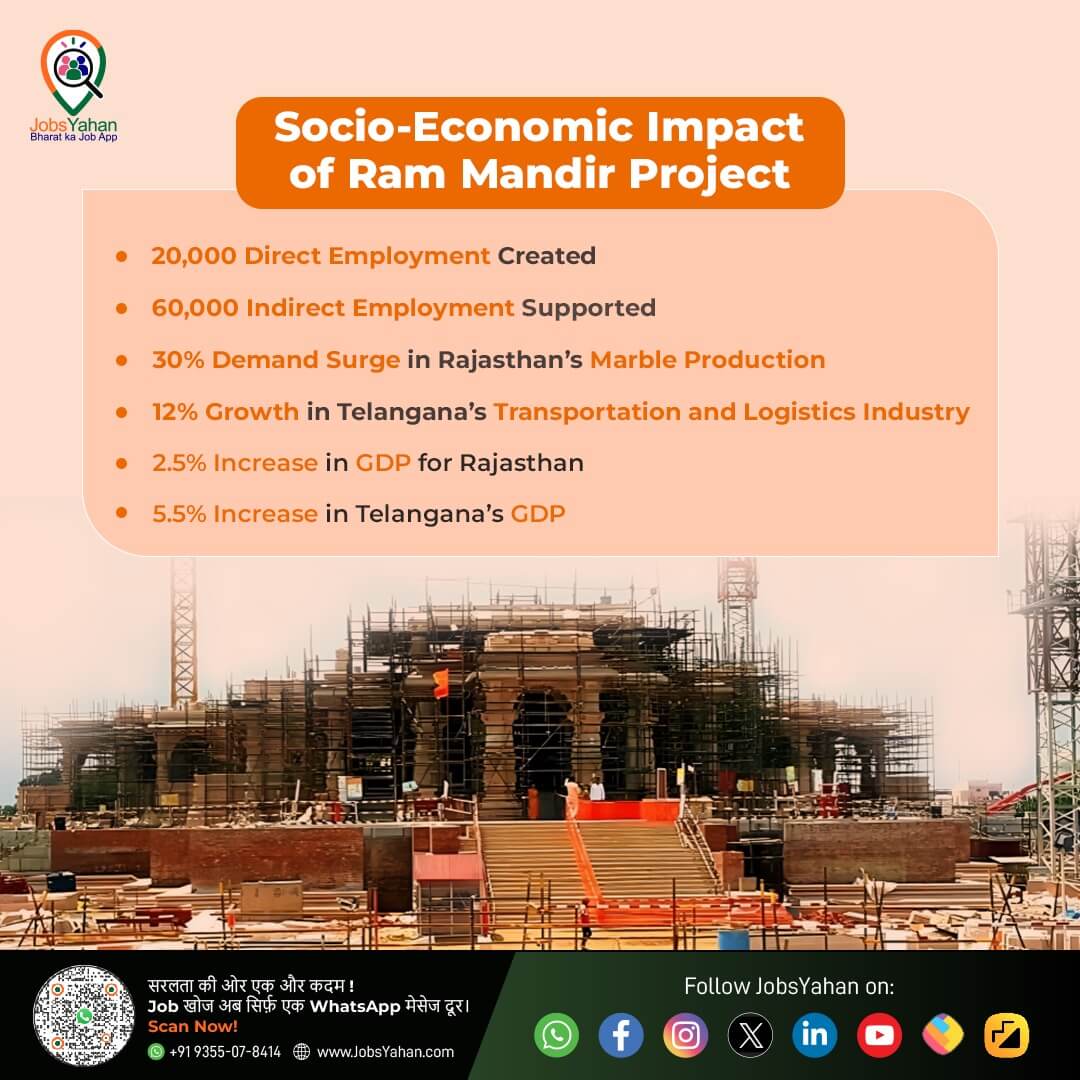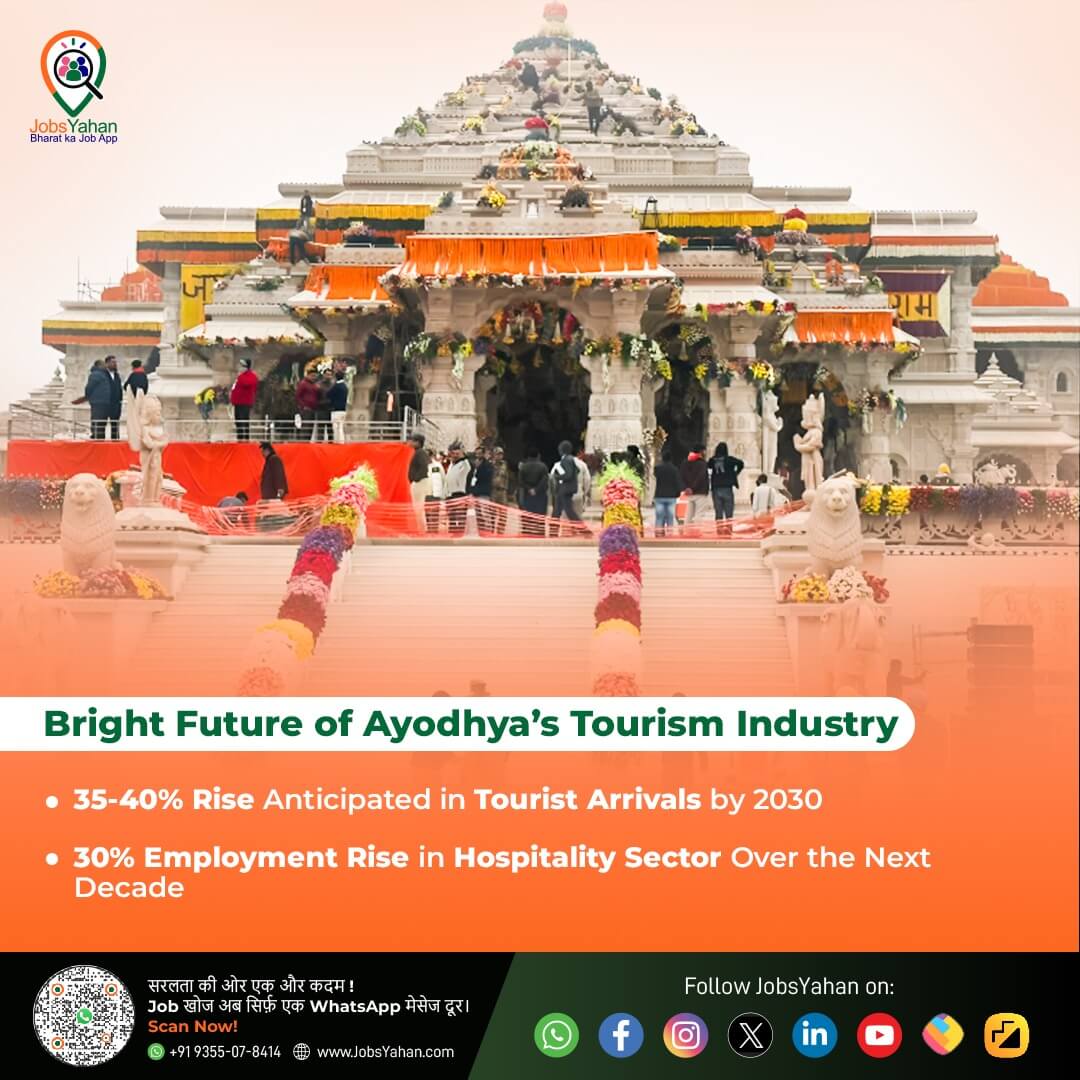From Ram Rajya to Ram Mandir: The Socio-Economic Story of the Informal Sector

Culture, in its essence, is the spiritual soil that nourishes the roots of economic prosperity. The artisans of Ayodhya, with their timeless crafts, are not merely shaping stone but are sculpting the future of a city where tradition and modernity coalesce.
Historical Overview
The name 'Ram' resonates with profound philosophical meaning, intertwining two elemental seeds - the 'Agni Beej' (Ra) and the 'Amrit Beej' (Ma). This amalgamation symbolises an enlightening journey, a pathway to spiritual awakening. The significance of this name is deeply entrenched in the annals of Hindu philosophy, as highlighted by Dr. Sarvapalli Radhakrishnan in his seminal work, "The Hindu View of Life[1]". Dr. Radhakrishnan, a renowned philosopher and statesman, accentuated the dynamic and evolving nature of Hinduism, a tradition that transcends the confines of rigid dogmas.
Mahatma Gandhi’s interpretation of "Ram Rajya[2]" further exemplifies the progressive ethos. For Gandhi, 'Ram Rajya' was not just a religious concept; it was the epitome of an ideal governance model, predicated on moral authority and the principle of equality. His vision transcended the barriers of time and religion, advocating for a society where justice and equality prevailed, regardless of one's social standing.
Adding to the profound philosophical context of 'Ram' and its representation in Hinduism, as elucidated by Dr. Sarvapalli Radhakrishnan, it's also pertinent to explore the concept of the informal sector within the framework of 'Ram Rajya'. 'Ram Rajya', often epitomised as an ideal state in Hindu philosophy, is not just a concept bound to spirituality and governance but also extends to socio-economic dimensions, including the informal sector.
The Ram Rajya and Informal Sector
In the envisioned 'Ram Rajya', the informal sector plays a crucial role. Historically, this sector has been a significant part of the Indian economy, encompassing a wide range of activities from small-scale, unregistered businesses to street vendors and artisans. In the context of 'Ram Rajya', the informal sector is seen as an integral part of the societal fabric, contributing to the economy while providing livelihoods to a large segment of the population.
The ethos of 'Ram Rajya' suggests a governance model where even the informal sector thrives under principles of fairness, justice, and equality. In such a setup, the welfare of workers in the informal sector is given importance, ensuring they are not marginalised. The focus is on creating an inclusive economic environment where every individual, regardless of their occupational stratum, is respected and their contribution to the economy is valued.
This vision aligns with Mahatma Gandhi's interpretation of 'Ram Rajya', where he envisioned a society where every individual, irrespective of their socio-economic status, has equal rights and opportunities. In Gandhi's view, 'Ram Rajya' represented an ideal state where the principles of ethical governance and social justice extended to all layers of society, including the informal sector.
Therefore, in the broader implications of the Ram Mandir project and its symbolic representation of 'Ram Rajya', it's essential to consider the informal sector not as a peripheral entity but as a vital component of the societal and economic framework. This includes acknowledging and addressing the challenges faced by this sector, such as the need for better working conditions, fair wages, and social security, thus ensuring that the principles of 'Ram Rajya' are holistically applied.
Incorporating the concept of 'Ram Rajya' and its philosophical underpinnings into the current socio-economic landscape, particularly in the context of the Ram Mandir construction in Ayodhya, we observe a notable resurgence and revitalization of the informal sector. This resurgence is deeply intertwined with the ongoing construction activities and the broader symbolic significance of the project.
The Ram Mandir and its Socio-Economic Impact
The construction of the Ram Mandir has acted as a catalyst, invigorating the informal sector in and around Ayodhya. Small-scale businesses, artisans, craftsmen, and traders, who form the backbone of this sector, have experienced a significant uptick in activity and opportunities. This boost is largely attributable to the increased demand for services and goods related to the construction project, such as local handicrafts, building materials, and various support services.
The project has opened avenues for employment and economic participation for those who typically operate on the margins of the formal economy. Street vendors, local artisans, and small entrepreneurs have found a burgeoning market for their products and services, fuelling a sense of community and economic empowerment.
Moreover, the revival of the informal sector in the wake of the Ram Mandir construction has broader implications. It highlights the potential of cultural and religious projects to stimulate local economies, especially in regions where the informal sector plays a significant role. The construction has not only provided a stimulus in terms of employment but has also fostered a sense of community pride and cultural resurgence, which is vital for the holistic development of society.
Thus, in the contemporary scenario, the resurgence of the informal sector due to the Ram Mandir construction is a testament to the dynamic and inclusive economic growth envisioned in the ideal of 'Ram Rajya'. The construction project in Ayodhya, while deeply rooted in religious significance, has unfolded as a major catalyst for economic and employment growth across India. This iconic project extends its impact far beyond spiritual boundaries, triggering a ripple effect in the national economic landscape.
At the heart of its economic influence is the remarkable creation of job opportunities. The construction phase alone has not only provided employment to approximately 20,000 people directly but has also indirectly supported around 60,000 jobs. This surge in employment extends across various sectors, including construction, transport, logistics, and material production, thereby contributing significantly to reducing unemployment rates in these areas.

In particular, the demand for construction materials has spiked, notably for Makrana Marble[3], known for its high quality and durability. This demand surge has resulted in a 30% increase in production in the marble industry, not only benefiting the local economies of Rajasthan but also promoting industrial activity in other states. For instance, in Telangana, the transportation and logistics sectors have witnessed a growth of 12%, directly attributable to the transportation of materials for the Ram Mandir construction.
On a national scale, the project's economic impact is evident through its contribution to the Gross Domestic Product (GDP). States like Rajasthan have seen a 2.5% increase in their GDP, while Telangana's transportation sector has contributed to a 5.5% rise in its GDP. This underscores the project's role in stimulating economic growth across multiple regions.
Another major economic driver is the anticipated boom in tourism and hospitality. Ayodhya, a city steeped in history and religious significance, is set to witness a significant influx of tourists, both from within India and abroad. This expected surge in tourism is poised to catalyse the development of hospitality infrastructure, leading to numerous job opportunities and enhancing services like catering, guiding, and local transport. The impact of this tourism boom is expected to extend beyond the local economy, contributing substantially to the national economy through foreign exchange and cultural exchanges.
The tourism sector, in particular, is poised for a significant uplift. With Ayodhya's historical and religious allure, a 35-40% increase in tourist arrivals is anticipated by 2030. This influx will necessitate expanded hospitality infrastructure, leading to the creation of new hotels, restaurants, and local transportation services. The employment in the hospitality sector is expected to rise by 20-25% in the coming decade, bringing economic prosperity to the local populace.

Moreover, the Ram Mandir project is paving the way for economic diversification and skill development. The growing demand across various sectors necessitates a skilled workforce, thereby spurring investments in education and vocational training. This focus on skill enhancement is a strategic step towards ensuring sustainable economic growth and reducing reliance on traditional sectors.




